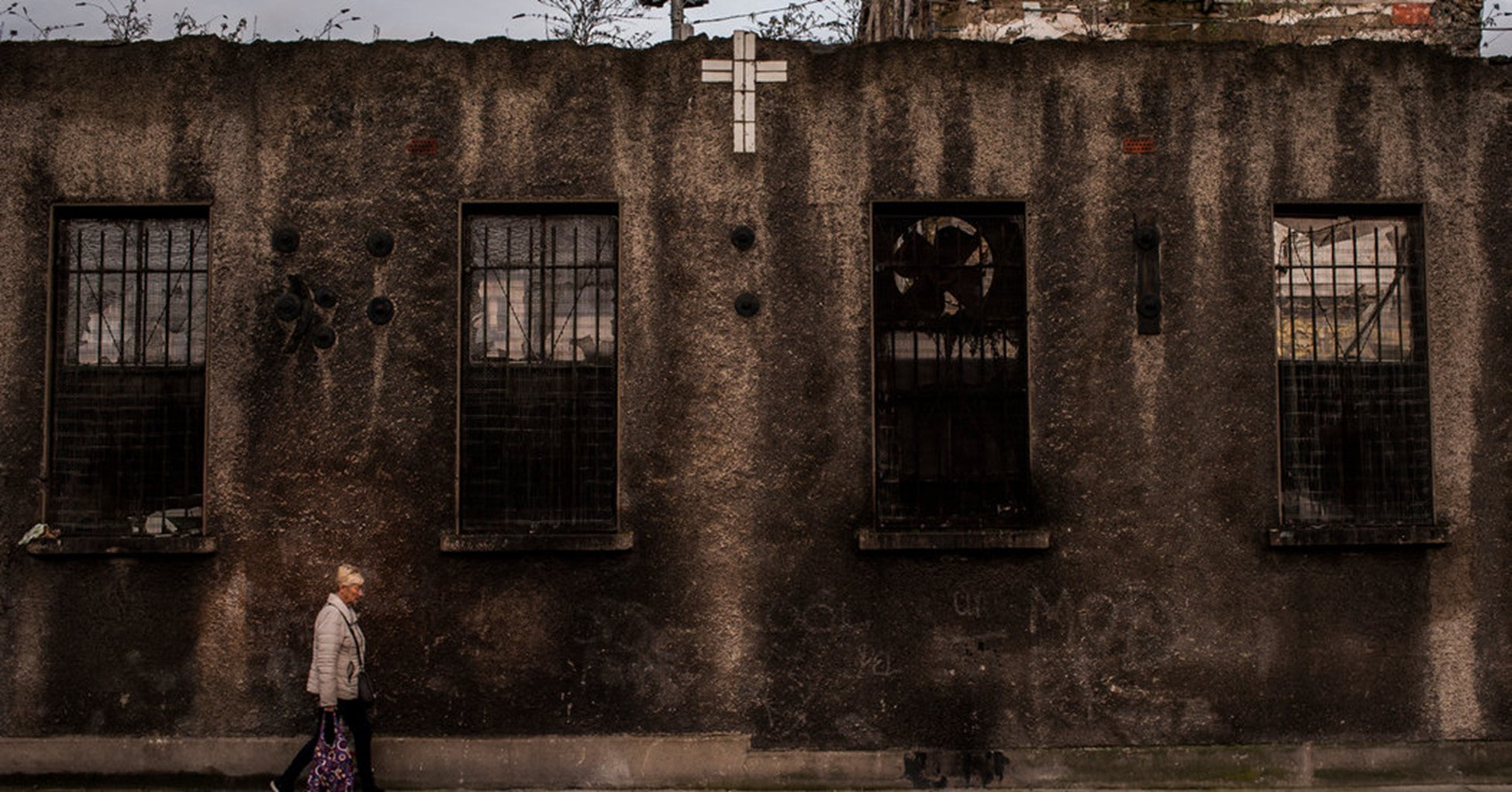
Sinead O’Connor: She was so far ahead of her time, we couldn’t hear what she was trying to tell us.
Gloucester Laundry: The last of the Magdalene Laundries.
When Sinead O’Conner ripped up the picture of the Pope on Saturday Night Live, the whole world was repulsed. Joe Pesci, who hosted SNL the very next week, said in his opening monologue that if he had been hosting the show the week before, “he would have smacked her.” Madonna denounced her, too.
But if you watch the episode again, with the benefit of hindsight, you’ll see that Sinead was objecting to child abuse as perpetrated by the Catholic Church. We ALL know about that now, but not many people were aware of it when Sinead made her bold (and to the whole world’s eyes) offensive gesture.
Growing up in a troubled, Irish home in the seventies very few people had a closer look at what was going on than Sinead. Abused by her mother, who would pin her to the floor and physically beat her, Sinead was sent off to live in a “training” facility in Dublin run by The Order of Our Lady of Charity. It had formerly been a Magdalene Laundry.
Magdalene Laundries were virtual prisons for “fallen women” who were sent there because they were trouble-makers, gay or unmarried and pregnant. Many of these women stayed there for their entire lives and died there too. Yet, these Magdalene Laundries were profit centers for the Catholic Church. The girls and women were paid nothing for their labors: Forced to wash, clean and iron clothes for all sorts of clients including the Irish government and the Irish military.
Even though the basic structure of the Magdalene Laundry had changed by the time Sinead arrived, she saw the aging women who had previously been imprisoned there and now simply had nowhere else to go. In Sinead’s time, as in earlier times, a parent’s wish, was all that was needed to consign a young woman to years of forced labor with no pay. Amazingly, there was no government intervention or oversight over these decisions at that time. The Catholic Church made these decisions unilaterally.
Sinead was allowed to leave when she turned 18 and a short time later, when her mother died, Sinead took the photograph she would eventually rip up on SNL off the wall of her mother’s apartment. She said she would see that picture every time her mother pinned her on the floor and beat her. She saved it as a reminder of that abuse, knowing she would ceremoniously destroy it someday at just the right moment. That moment came on Saturday Night Live in 1992.
Decades later we now know the truth that Sinead was trying to tell us before we were capable of hearing it: “The Catholic Church wouldn’t knowingly condone such abusive behavior” I and everyone else at the time thought. Surprisingly, while the rest of the world watched her career implode, she recalls that this was in fact the best thing that ever happened to her. As she wrote in her 2021 memoir Rememberings: "A lot of people say that tearing up the Pope's photo derailed my career. That's not how I feel about it. I feel that having a number-one record derailed my career and my tearing the photo put me back on the right track.” Apparently, Sinead with all her mental health issues, didn’t like being in the limelight as much as we all ASSUMED she did.
To me, the takeaway from this sad, long running episode, on which we now have much more clarity, is we need to listen carefully to those whose opinions we don’t understand and realize that everything WE hear comes through the filter of perception. This phenomenon is called confirmation bias: We tend to hear what we want to hear and filter out anything that runs counter to what we already believe. Thus, it’s very difficult for NEW, contradictory information to make it past this filter. This causes us ALL enormous amounts of stress, because we are railing against people and positions, that if we just took the time to really hear, might help teach us all how the world really functions. Or it might reveal some truth, that we are incapable of hearing.
To be honest, I never cared for Sinead’s music or what appeared to me at the time as her shenanigans. I had no idea that she was railing against abuse in the Catholic Church. All I knew – until now – is that she offensively ripped up a picture of the Pope on national TV. People shouldn’t do that, I thought at the time. If you haven’t already, click on the link in the first paragraph and you’ll see an interview from ten years later where she explains how she was knowingly taking risks with her career in order to bring attention to this issue. In my eyes Sinead died a martyr and maybe, just maybe the Catholic Church should recognize that!





James Porter
Author